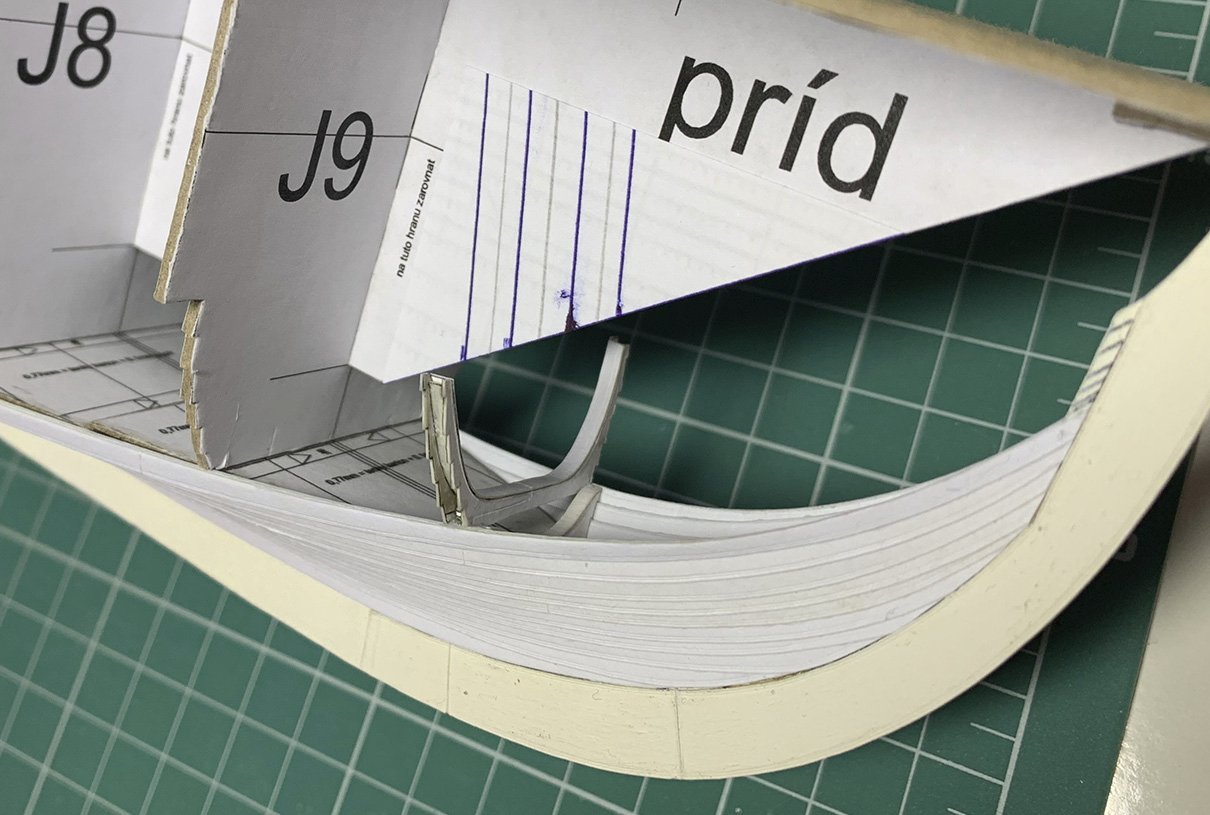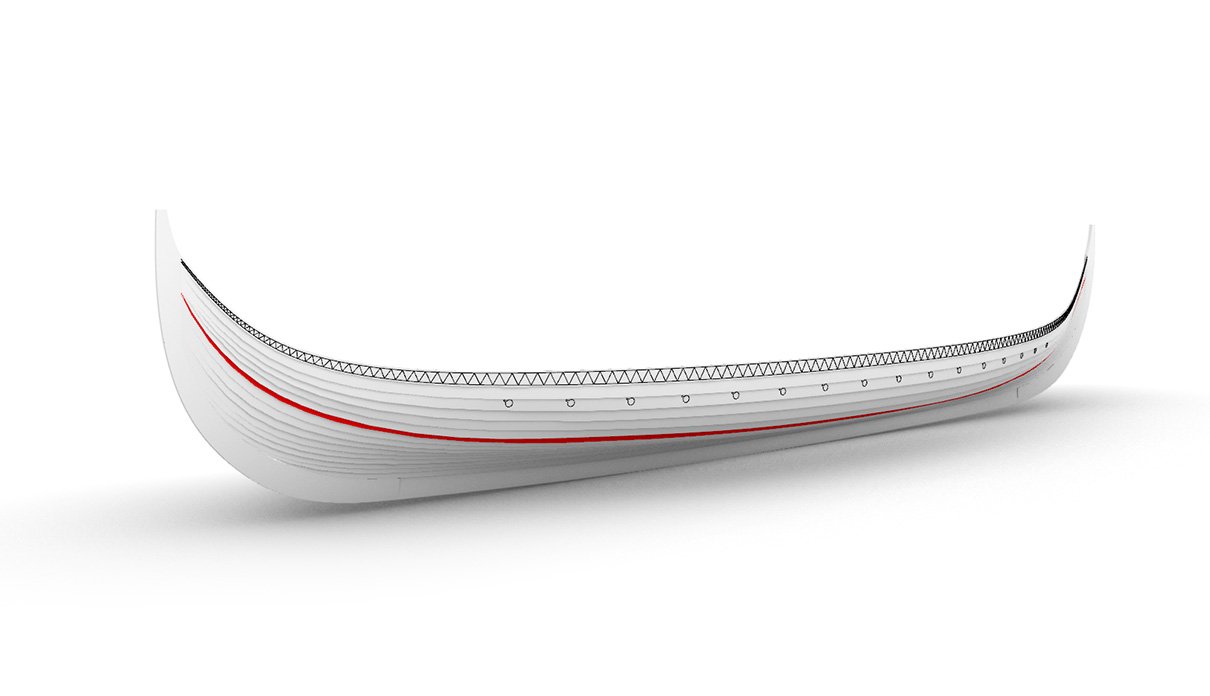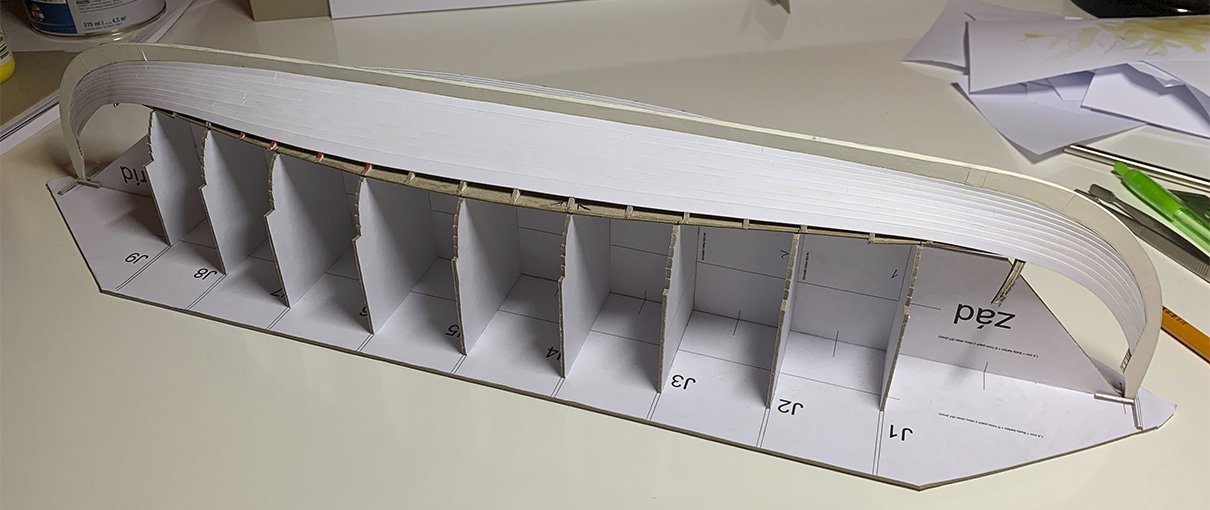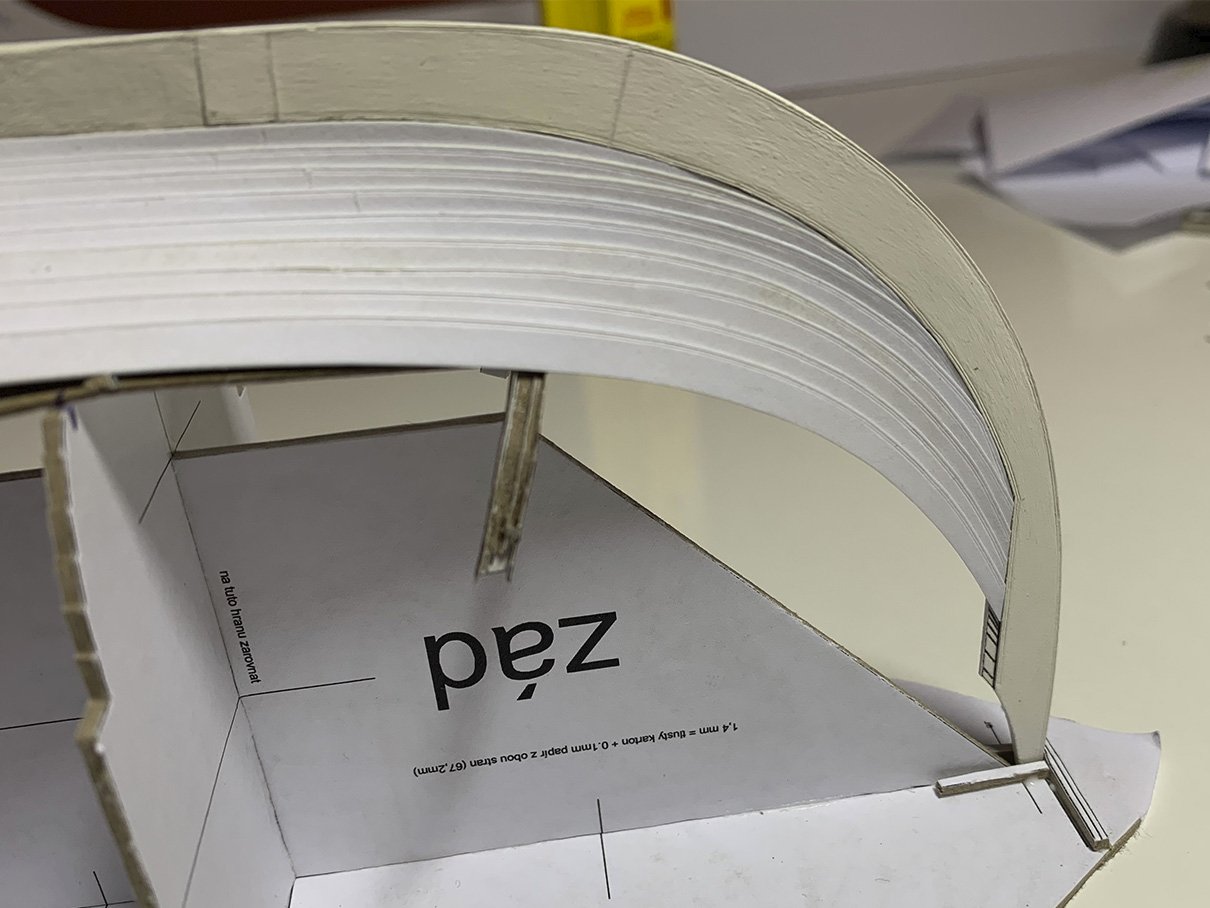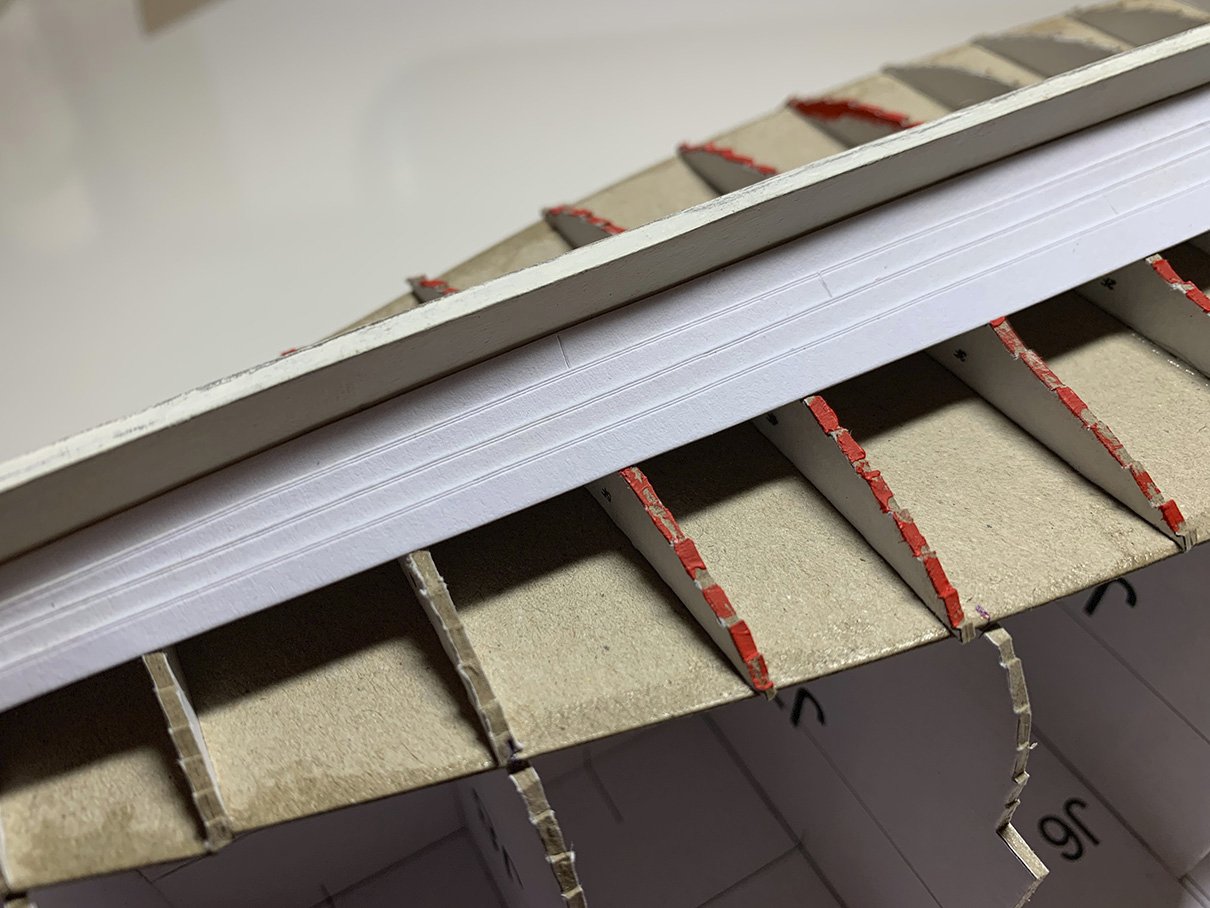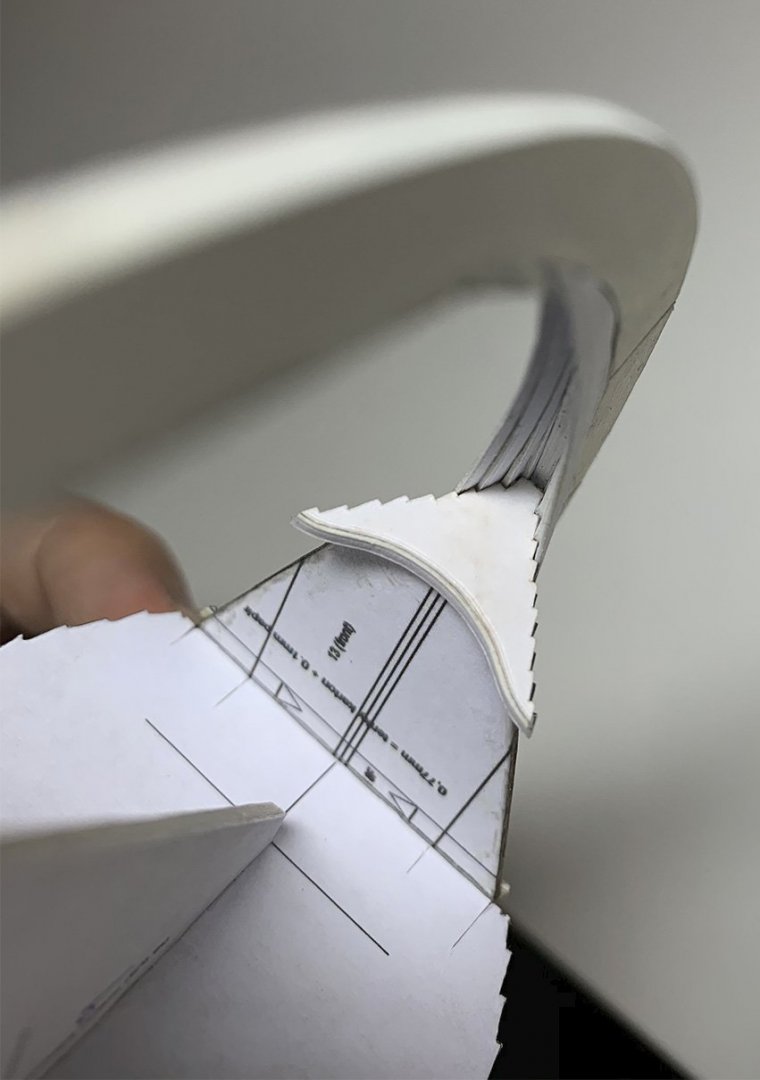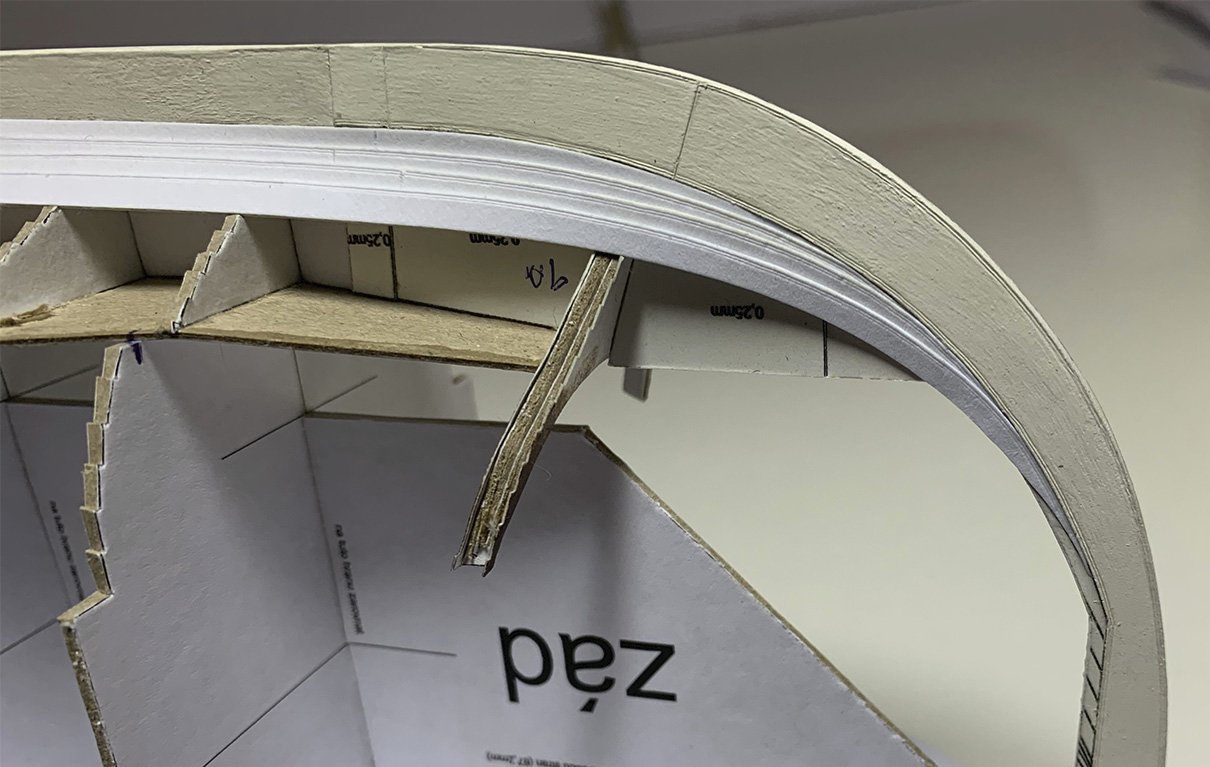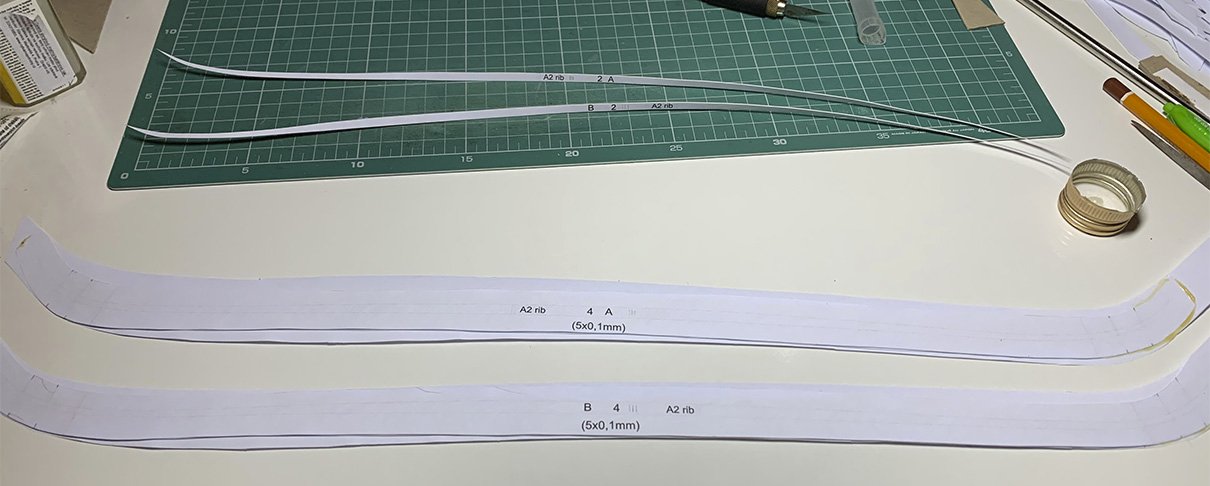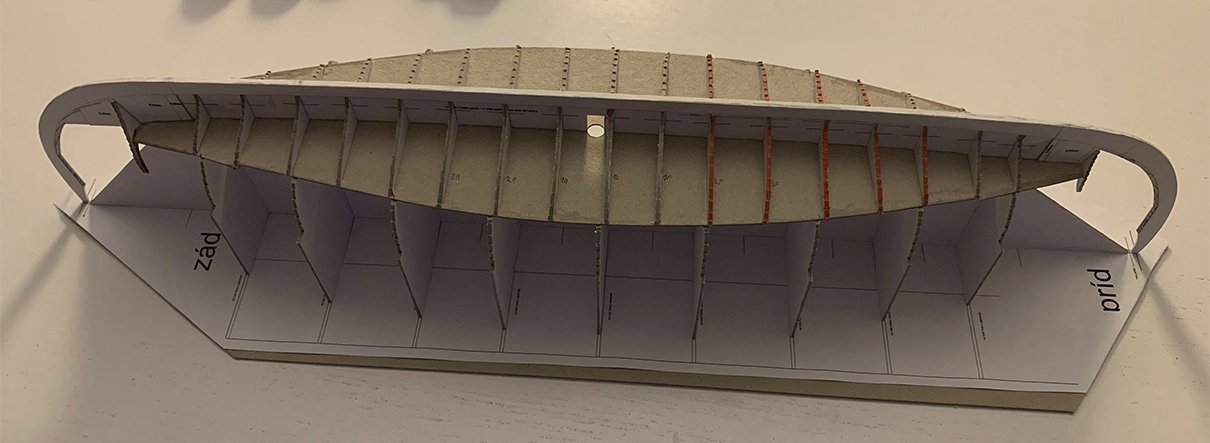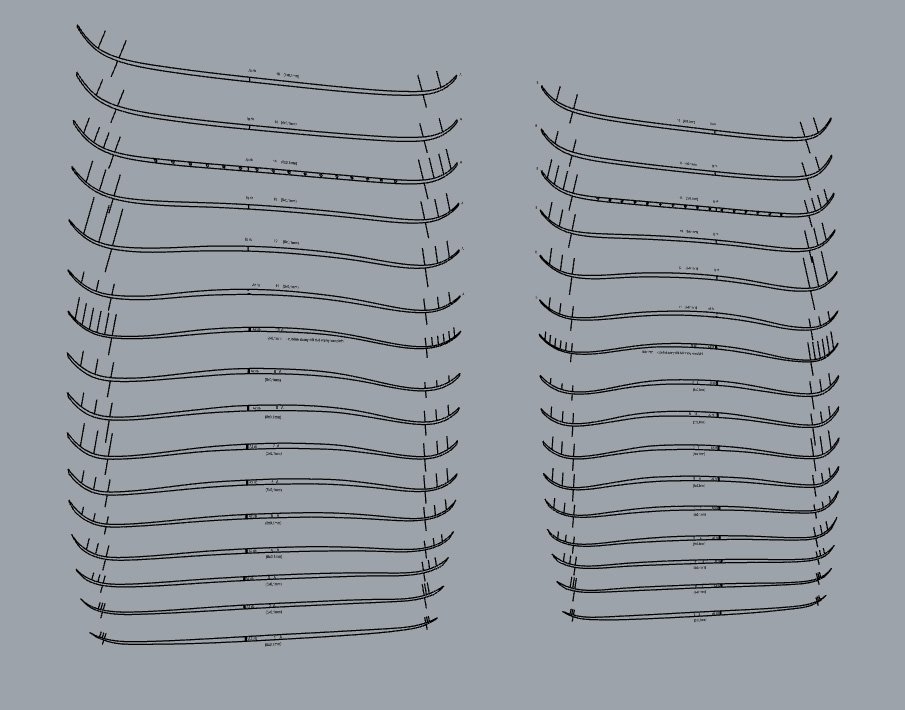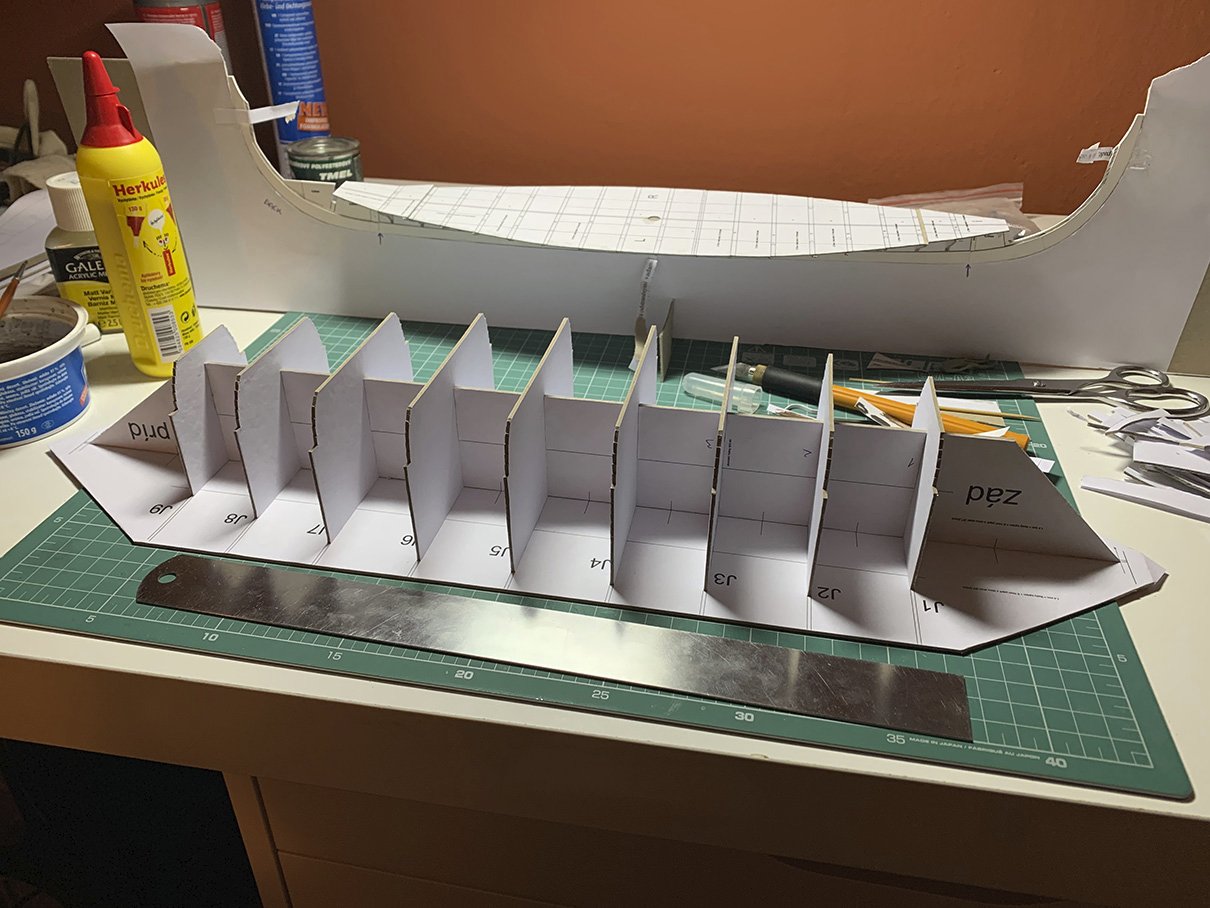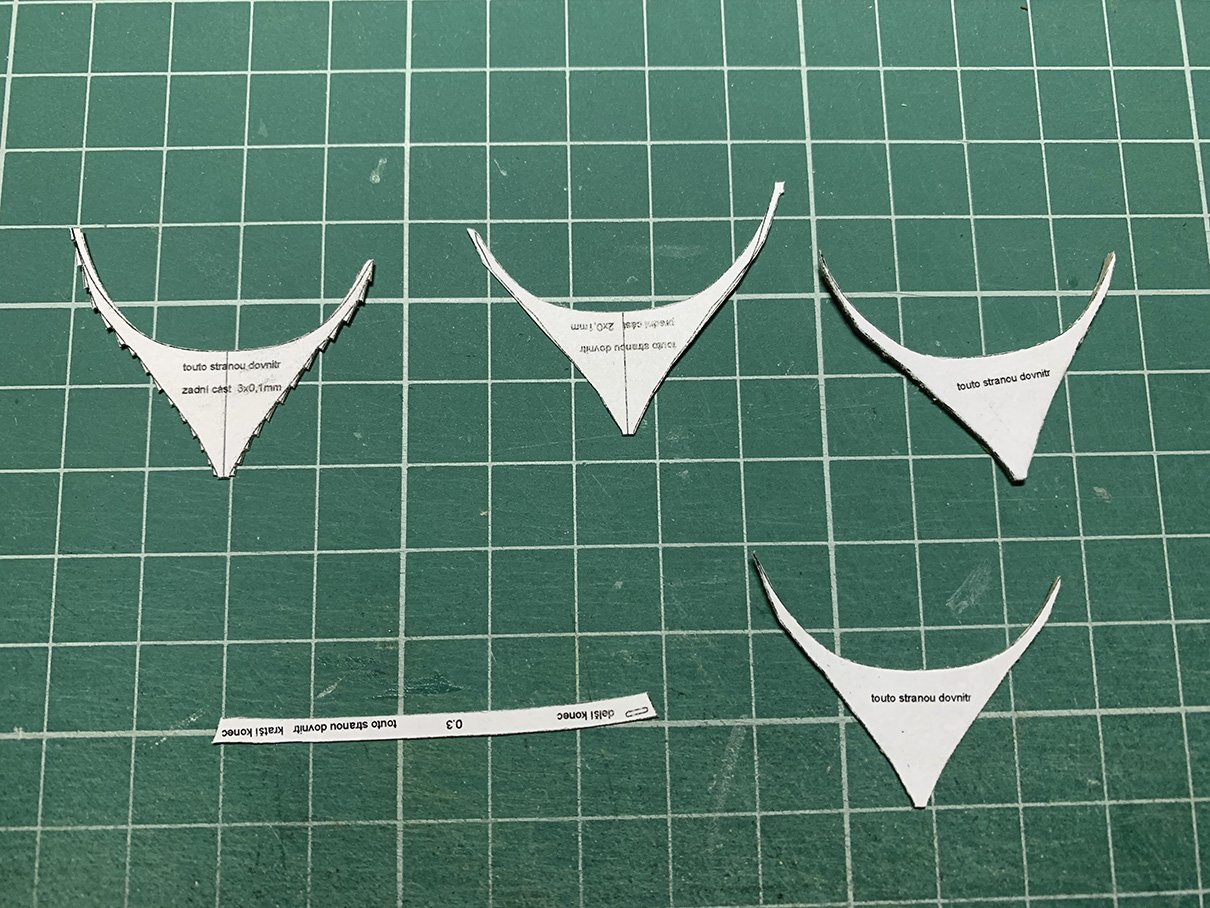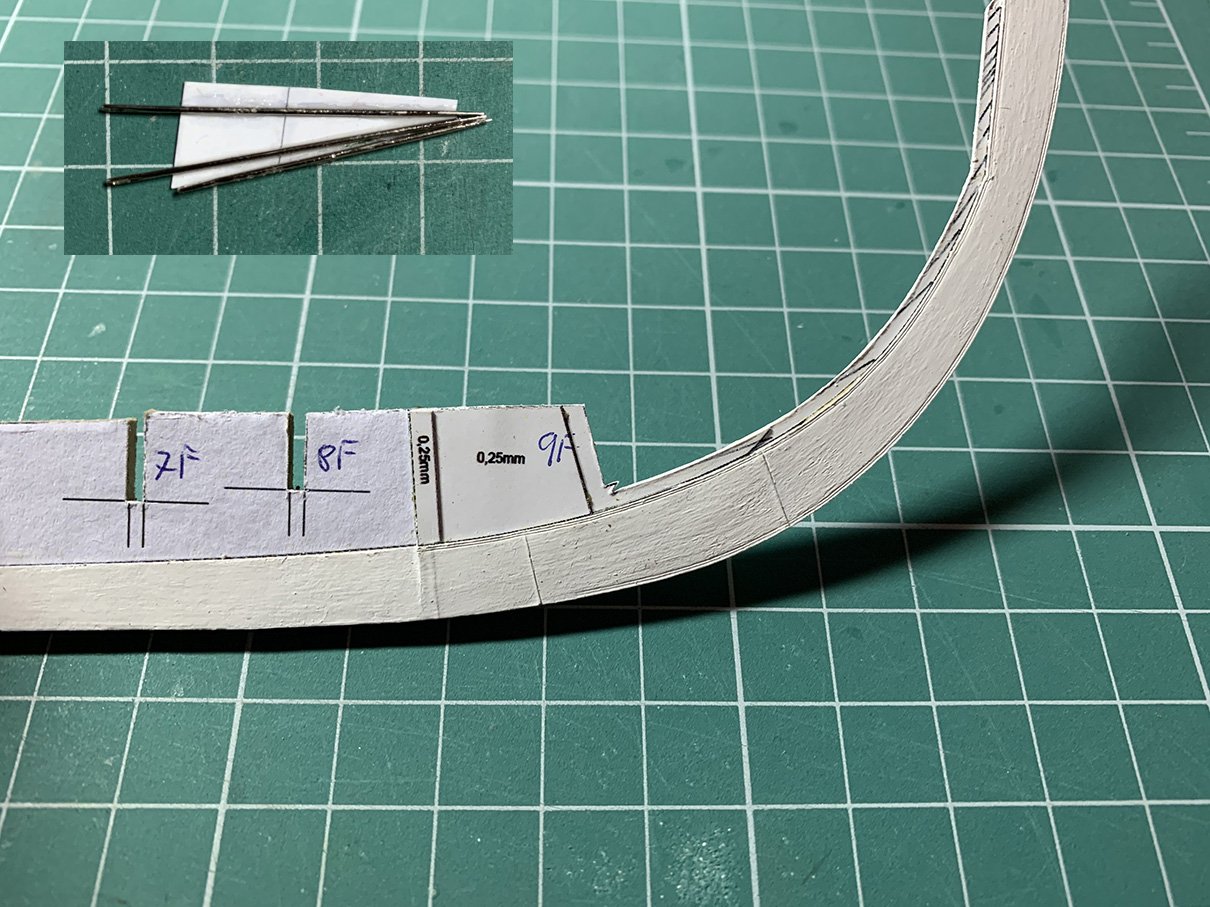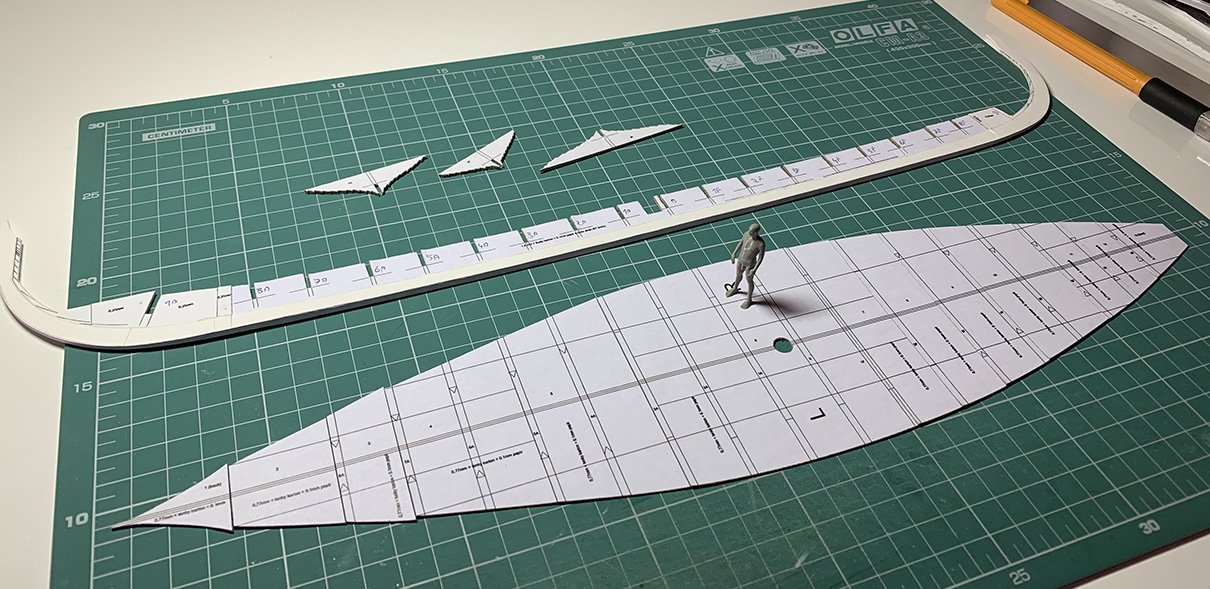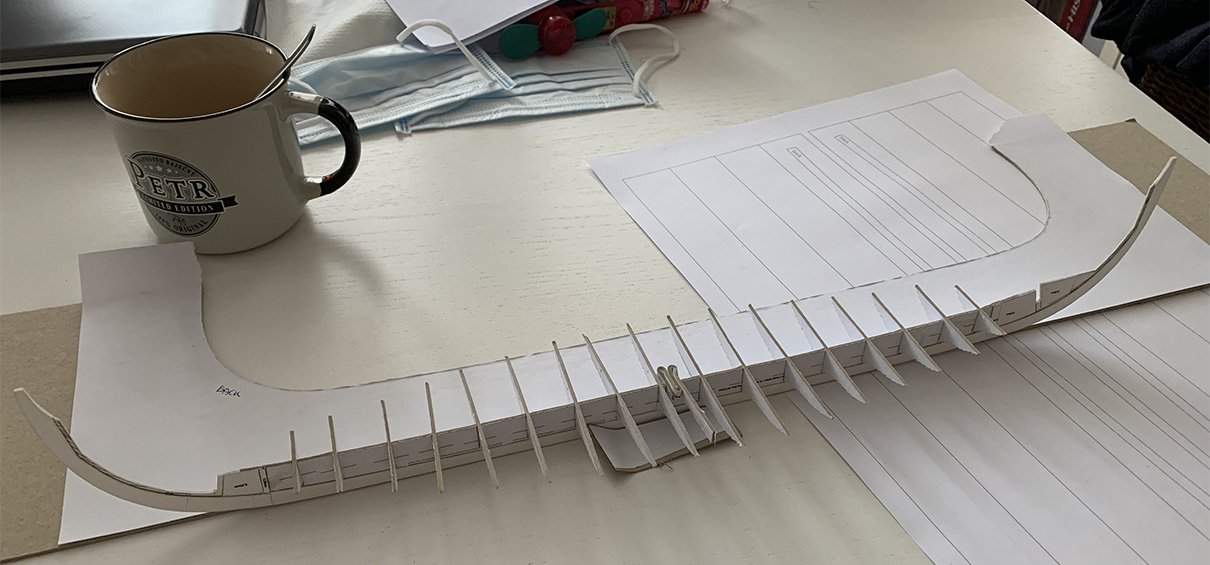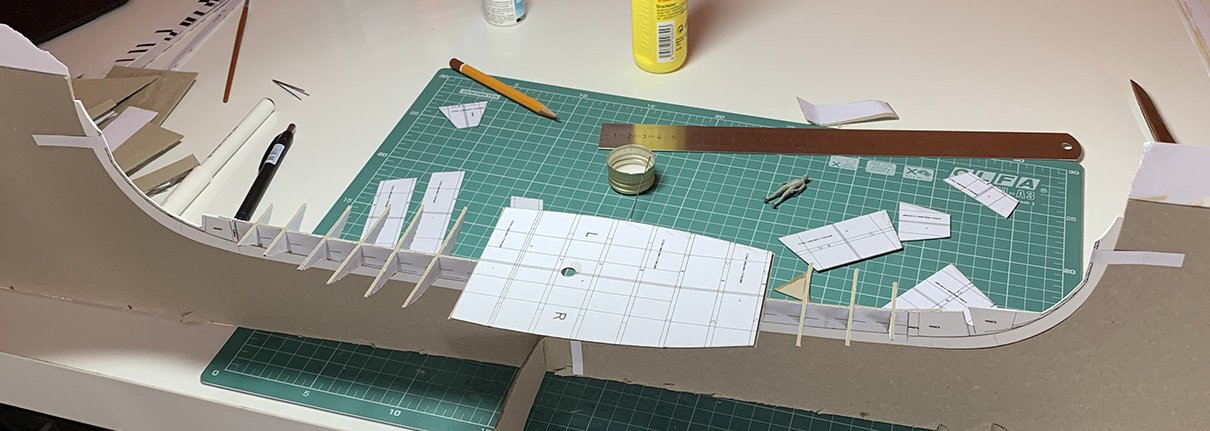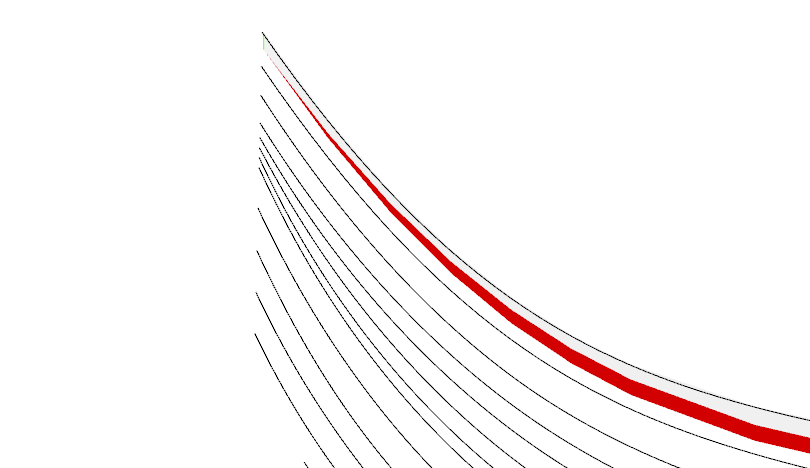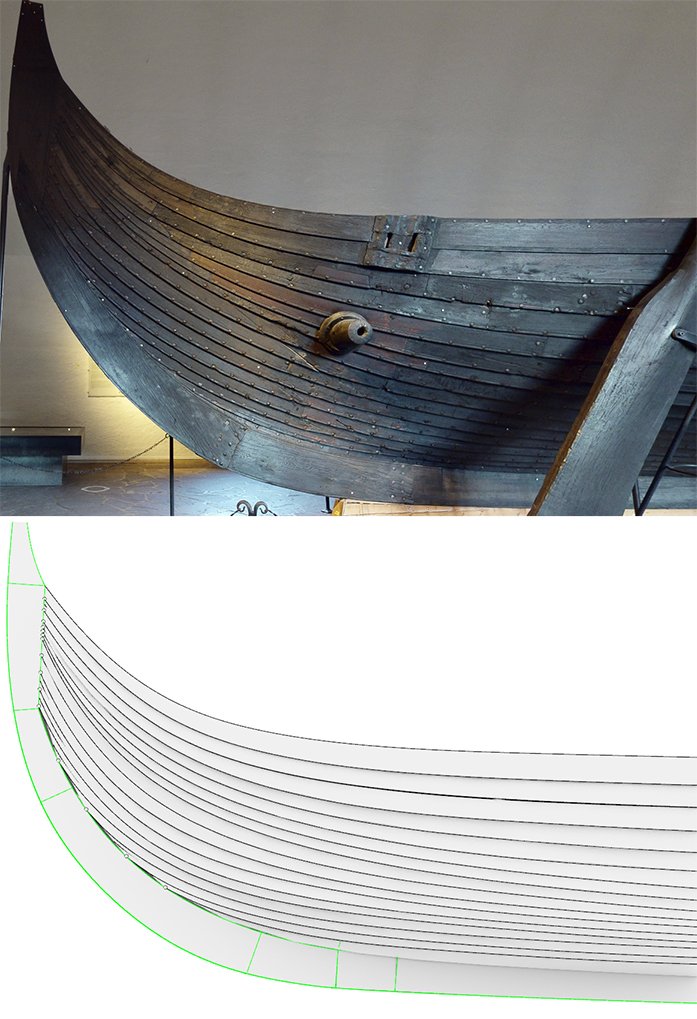
bigpetr
Members-
Posts
123 -
Joined
-
Last visited
Content Type
Profiles
Forums
Gallery
Events
Everything posted by bigpetr
-
It is hard to say where the problem is. It can be printer or PDF exporter. PDF exporter acted wierdly in rhino. For example circles were not circular. So I export to other format (.ai format because i have Illustrator) and export to PDF from there. This way i have also no problem to print PDF with actual scale set up. I did not checked it since so maybe rhino PDF exporter is fine now. Also I print 15cm ruller on the edge of the page, so i can check if page is printed at 100% scale
-
I have to attach another rib to guide the planks, because planking reach to the top of the small rib underneath it. I have ploted decorative triangles to the top planks. They were probably painted. Are there some information on how the color on viking ships was done? Did they apply protective tar coat and then the colour, or just the colour layer? Or colour and then tar? Or do they mixed color pigment with tar? On museum replicas it looks like just colour layer.
-
WOW. Magnificent stand. Not overdone, doesnt compete with the ship. Beautiful.
- 158 replies
-
- byblos ship
- Egyptian
-
(and 1 more)
Tagged with:
-
What I wanted to say just sounded, Bravo and big thanks for so well documented and shared journey.
-
Something about nitrocelulose varnish: https://nitorlack.com/en/blog/nitrocellulose-varnishes-everything-you-need-to-know/
-
I did not try it myself yet, but some paper modelers soak the whole sheets of paper from the book (before cuting the parts) with nitrocelulose so it goes through the paper to the other side. So I think you do not have to worry about amount of the varnish. More the better in this case. Better to test it on some scraps as you wrote.
-
You have to harden the edges that you are sanding. You can soak the edge with CA glue or clear varnish and then you can sand just fine
-
What a beautiful and detailed model. Congratulations. It is just a thought, but I would appriciate something to show the scale of the ship, something like stylizes "architectural" style scale figure standing on the deck or better on the base so it do not interfere with the model.
-
I am glad you like it, friends. No, the shape of the plank is not same from stem to midship and from midship to stern. I 3d modeled planks to fit all actual ribs so they dictates the shape of the whole plank. Also stem and stern has different shapes so endings of the planks is different there also. My planks represents the shape of the ship as displayed in musemum today, witch, as I learned receantly, probably do not represent the shape of the ship from its active years of duty due to 1000 year in the ground, wood shrinking and romantic ideas of archeologists from first half of 20th century who reconstructed the ship for display. Lets hope it will recieve the same treatment from nowdays archeologists as Oseberg ship and we will get the shape closer to the initial state of the ship.😀
-
Planking journey has started, first plank in place, fits perfectly: Here are planks in two stages of making proces. Laminated templates and cut out planks. Planks are laminated to desired thickness in a way that ends are roughly two times thinner than the middle part, same as the original planks. Also not every plank has the same thickness. In this scale differences are few tenths od millimeter, so I hope it will be at least felt if not seen.😀
-
Excelent. And what a beautiful showcase. It took me some time to figure out how the levers worked, but I get it😀. My brain must be lazy today (hopefuly only today😀)
- 158 replies
-
- byblos ship
- Egyptian
-
(and 1 more)
Tagged with:
-
Jig is ready to serve, I forgot to include few important guidelines to the jig, so I had to plot them by hand: Then I assembled some visible ribs and aplied the grooves to the edges. Some test paint was used to see if the grooves will be visible when painted . They are, so I will continue to do them on the rest of the ship.
-
It looks great. How did they steer with them? Just by rotating around their axis?
- 158 replies
-
- byblos ship
- Egyptian
-
(and 1 more)
Tagged with:
-
I made a tool from a needles to simulate carved grooves on the ship. Works great. Here it is applied to the stem edges: Then I could prepare the ribs and false deck (with 1:48 helmsman figure to be): Ribs attached and made square with the help of false deck: Next I will make proper jig to help with the planking.
-
Thank you for posting your findings Cathead, it will be invaluable for future builders. Do not worry about differnt height of the strakes at the ends. It is perfectly normal to be so. This is how gokstad ship strakes ends, pretty irregular:
About us
Modelshipworld - Advancing Ship Modeling through Research
SSL Secured
Your security is important for us so this Website is SSL-Secured
NRG Mailing Address
Nautical Research Guild
237 South Lincoln Street
Westmont IL, 60559-1917
Model Ship World ® and the MSW logo are Registered Trademarks, and belong to the Nautical Research Guild (United States Patent and Trademark Office: No. 6,929,264 & No. 6,929,274, registered Dec. 20, 2022)
Helpful Links
About the NRG
If you enjoy building ship models that are historically accurate as well as beautiful, then The Nautical Research Guild (NRG) is just right for you.
The Guild is a non-profit educational organization whose mission is to “Advance Ship Modeling Through Research”. We provide support to our members in their efforts to raise the quality of their model ships.
The Nautical Research Guild has published our world-renowned quarterly magazine, The Nautical Research Journal, since 1955. The pages of the Journal are full of articles by accomplished ship modelers who show you how they create those exquisite details on their models, and by maritime historians who show you the correct details to build. The Journal is available in both print and digital editions. Go to the NRG web site (www.thenrg.org) to download a complimentary digital copy of the Journal. The NRG also publishes plan sets, books and compilations of back issues of the Journal and the former Ships in Scale and Model Ship Builder magazines.


